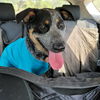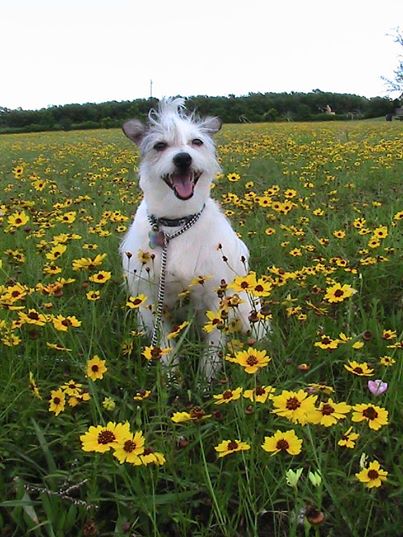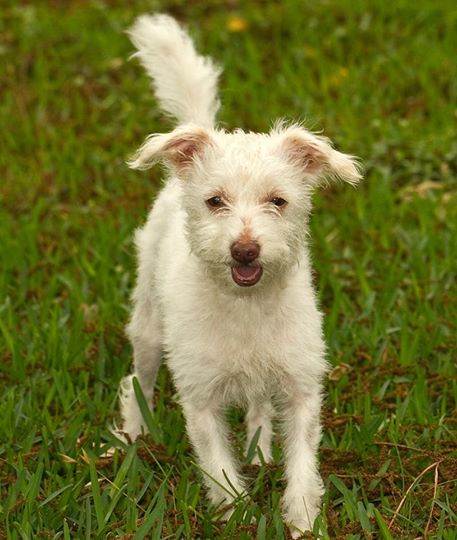 |
Caring For Your PetSouthern Comforts Animal Rescue is dedicated to providing our animals with the best possible care and training. We are also committed to helping to educate the public on responsible pet ownership. Below you will find tips and articles that provide practical advice on common pet issues. Why is My Dog a Finicky Eater?Article courtesy of Phil the Dog Listener
As we know, dogs are pack animals that inherited their instincts from the wolf. Dogs function the only way they know how, which is according to the hierarchy of the pack. We and our dogs are pack mates. By DNA, a dog must have a pack leader and it must know where it fits in the pecking order. Food is one of the four main areas in which leadership is established. In the canine world, the alpha is the provider and makes all decisions about food. Thus, a primary reason for your dog to be a finicky eater is to show you it controls food. So, if you leave your dog’s food down all day, you have given it a big reason to believe it is in charge. Your dog can eat as it wishes, and only alphas can do this. If your dog eats a few morsels of food and walks away, it is gesture eating to you. To us, this is picky eating. However, this is Fido’s way of saying: “I’m in charge around here.” Here are tips to put you in charge of food and turn your dog into an eager eater:
Remember, canines in the wild are not picky eaters. By your becoming the alpha, you will take the pressure of pack leadership off your dog, as it’s only jobs will be to eat, sleep and play. To us, this would be like hitting the lottery! Please feel free to contact me for the complete gesture eating routine and for any questions you have about your dog and pack leadership. As always, all calls are on the house with no strings attached. *If your dog is ill or you suspect it may be ill, please check with your Vet before implementing these tips. Gesture eating need not be done with dogs under 4 months old because they eat several times a day. Phil The Dog Listener 860-604-0996 philthedoglistener@Gmail.com What's in Your Dog's Food?Information excerpted from Dog Food Logic by Linda P. Case, M.S.
The 3% rule has to do with a seemingly simple and innocent-sounding word: "with." If a pet food label contains that word in its product name, the product is required to have only 3% of the ingredient in the formulation at the time of processing. If you measure out 100 pieces of kibble from a food labeled "with salmon" and then remove three pieces of kibble from the pile, those three pieces are equivalent to the amount of salmon that is found in that pile of kibble. Not much. Yet consumers are expected to know, understand and differentiate between the 95% Salmon Food, the 25% Salmon Dinner, and the 3% Adult Dinner with Salmon foods. This rule is by design imprecise (from 95% down to 25% for food versus dinner, really?) and in practice misleads (and possibly even deceives) consumers. If you wish to feed a salmon (or chicken or turkey or venison) based food, look for one of AAFCO's qualifying terms (dinner, recipe, formula) and avoid brands with the term "with". Need help choosing a food for your dog? Want assistance wading through the ads, labels, hype and information bombarding you every day? Learn what matters most by reading Dog Food Logic. Buy it today from Whole Dog Journal. Going Somewhere Especially Fun for Humans? Leave The Dog at Home!Excertped from The Whole Dog Journal
|








 Consider this …. there are no finicky eaters in the wild. A healthy canine, whether wolf or wild dog, would never leave food unless it was full. So, aside from being ill, why would a dog be a finicky eater?
Consider this …. there are no finicky eaters in the wild. A healthy canine, whether wolf or wild dog, would never leave food unless it was full. So, aside from being ill, why would a dog be a finicky eater? The ingredients that make up a dog food are (and should be) of great concern to dog owners and pet professionals. A food's ingredients have the job of providing all of the essential nutrients and energy (calories) to the dog who consumes the food, as well as contributing to the food's flavor, texture and appeal. As a result, when dog owners are selecting and comparing dog foods, the first place that they typically look is the label's ingredient list. We naturally expect this list to tell us what we need to know. Unfortunately, while the Federal Food, Drug and Cosmetic Act requires that pet food labels (like human food labels) are truthfully labeled and must include all of the food sources present in the product, current FDA and AAFCO labeling requirements fall far short of what is needed to allow informed and well considered choices by consumers.
The ingredients that make up a dog food are (and should be) of great concern to dog owners and pet professionals. A food's ingredients have the job of providing all of the essential nutrients and energy (calories) to the dog who consumes the food, as well as contributing to the food's flavor, texture and appeal. As a result, when dog owners are selecting and comparing dog foods, the first place that they typically look is the label's ingredient list. We naturally expect this list to tell us what we need to know. Unfortunately, while the Federal Food, Drug and Cosmetic Act requires that pet food labels (like human food labels) are truthfully labeled and must include all of the food sources present in the product, current FDA and AAFCO labeling requirements fall far short of what is needed to allow informed and well considered choices by consumers. ÂÂÂI love bringing my dog with me - when I go to a place where I know he will be comfortable and have the opportunity to do the kind of things he likes to do: run, swim, pretend-hunt, and greet and interact people he knows and likes. I don't bring him with me, however, when I'm going to places where I know he will be uncomfortable and can't do anything that's fun for him. He doesn't like loud noises, small children, being hot, or being subjected to a lot of people he doesn't know. That rules out a lot of places and experiences where I would like to have his company at times, such as my son's sporting events. There may be grass - but there is also heat, and little kids, and a speaker system, and Otto would spend the whole time stress-panting and wishing we were somewhere else.
ÂÂÂI love bringing my dog with me - when I go to a place where I know he will be comfortable and have the opportunity to do the kind of things he likes to do: run, swim, pretend-hunt, and greet and interact people he knows and likes. I don't bring him with me, however, when I'm going to places where I know he will be uncomfortable and can't do anything that's fun for him. He doesn't like loud noises, small children, being hot, or being subjected to a lot of people he doesn't know. That rules out a lot of places and experiences where I would like to have his company at times, such as my son's sporting events. There may be grass - but there is also heat, and little kids, and a speaker system, and Otto would spend the whole time stress-panting and wishing we were somewhere else.